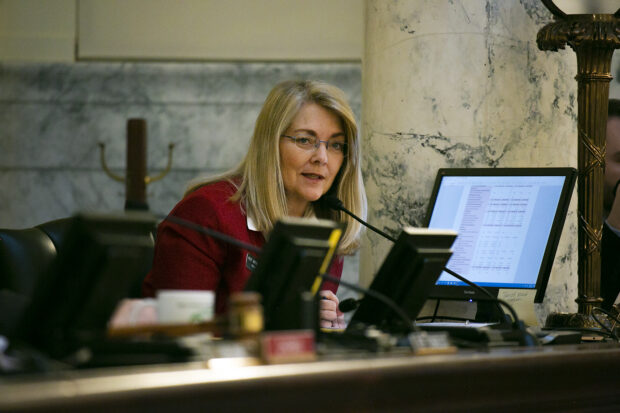As teachers and students across Idaho are trying to stay connected online, Gov. Brad Little is talking about cutting $10 million in school technology funding next year.
But there’s a reason, a Little aide said this week. Little believes he can use federal dollars to fill the void.
Last week, Little spelled out his blueprint to cut $99 million from next year’s K-12 budget — if state tax revenues continue to shrivel in the wake of a coronavirus-driven economic downturn. One proposed cut: reducing a school technology line item from $36.5 million to $26.5 million. This continues a pattern for Little; in March, his midyear K-12 cuts reduced the current year’s technology line item from $36.5 million to $29.2 million.
The cuts in the technology line item come as the global pandemic threatens classroom instruction in Idaho. State leaders believe schools will be able to reopen in the fall, but Little’s State Board of Education is talking about contingency plans in case the shutdown continues, or if an outbreak forces short-term local or statewide closures.
But while state tax revenues are in freefall, Idaho schools will get some help from Uncle Sam. A $2 trillion coronavirus stimulus package included nearly $48 million for Idaho schools, and Little has an additional $15 million of federal stimulus money to put into K-12 or higher education.
States can use their K-12 money for several purposes — and technology purchases are on that list.

“I think we are comfortable thinking that this will offset the (state budget) cuts,” said Greg Wilson, Little’s education adviser.
The idea, said Wilson, is to protect operational or “discretionary” dollars that school administrators can use to meet any number of local needs. As it is, Little’s $99 million cut-cutting plan will still affect discretionary dollars. Schools would stand to receive $27,556 per classroom. That’s down from the $28,887 lawmakers approved in March — and it’s also down from the $28,040 schools will receive this year.
State superintendent Sherri Ybarra said she’s on board with Little’s plan for technology funding, and commended the governor for bringing education leaders into the discussion early.
“The cut to the classroom technology line item was supported by stakeholders given that districts will be able to use (federal stimulus) funding to address technology needs essential to providing effective distance learning throughout Idaho,” Ybarra said in a statement.

Rep. Wendy Horman, R-Idaho Falls, has pushed for the state to boost discretionary dollars, so schools can cover health benefits or other costs. She agreed with using the feds’ money as a budget offset, and praised Little for signaling that educators now face a “very different” revenue picture.
“That’s important for schools to realize that,” Horman said Tuesday.
For the Nampa School District, the state’s line item helped kickstart a technology initiative. The district has used about half of its state technology funding to pay for network infrastructure, and the other half to pay for computing devices for students. But a voter-passed supplemental property tax levy pays most of the cost for devices for students.
Each of the district’s 14,000 students have a personal computing device. And on March 19, Nampa was the first large district to announce a plan to move learning online in response to the coronavirus pandemic.
